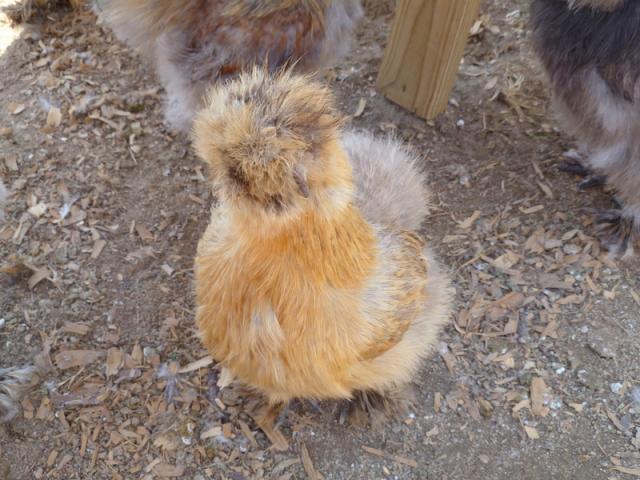Quote:
I am just basically going to do the color of the birds. Their wings seem nice and tight.
Well I hope you get more than my opinion because I don't know much, but here goes.
I am not going to take up time on the babies. They seem fine except for whatever input you had on there.
Many of these seem extremely light, almost orange.
2A. cockerel would be my guess. Very light in color
2B. Keep the beak trimmed. I have 1 like that.
4A. Again, very light. I'm almost thinking blue partrtidge. The under fluff looks blue
5A. Same as 4. Maybe blue partridge.
5B. Cockerel
There doesn't seem to be a dark chest on any of the birds which is called for in the SOP
Their crests seem to be the same color as the rest of the body. It's supposed to be dark.
The black one is very pretty. The comb maybe a little off, but I don't think it's a problem.
Your best bet would be to read and reread the SOP for each variety. Of course there isn't an SOP for the blue partridge because it is not a recognised color. You could ask other people that have the blues and find out.
They are all very beautiful in their own right. Actually I really like the one (shoot, I can't remember the number) maybe 5A.
You have pretty much cretiqued them yourself.
They are not true partridge. Crest is supposed to be a very dark chestnut to black. Pullets are lemon yellow with streaks of dark running down to its back and chest. The under fluff is supposed to be black or very dark chestnut also.
If you look back at the first pictures posted and the pictures from Bat Cave Silkies you will see what hens and cocks are supposed to look like (or very close to it)
Here is a link to the SOP for partridge Silkies.
http://www.browneggblueegg.com/StandardColors.html#partridge








 Sort of a joke, but you know what I mean
Sort of a joke, but you know what I mean 
